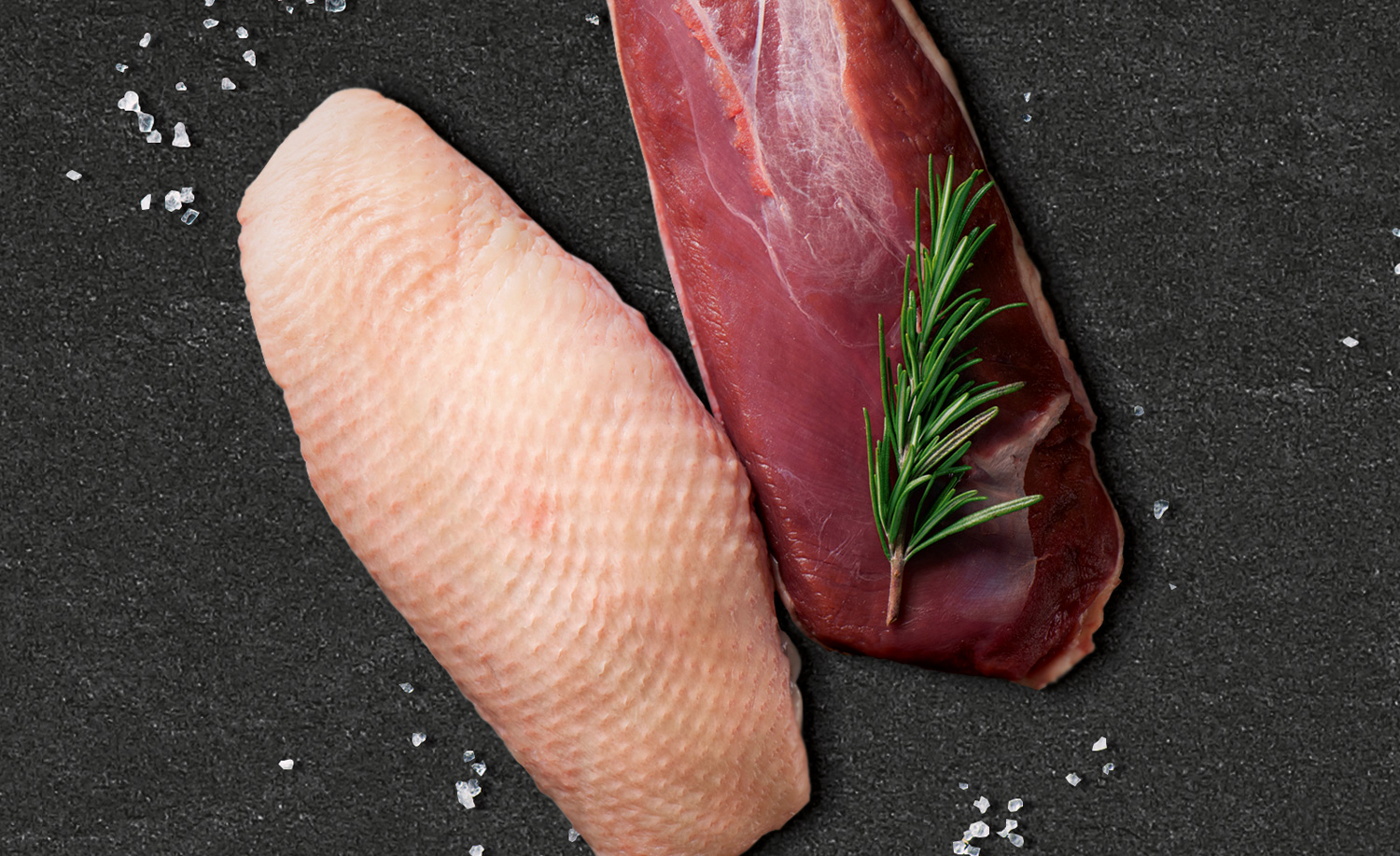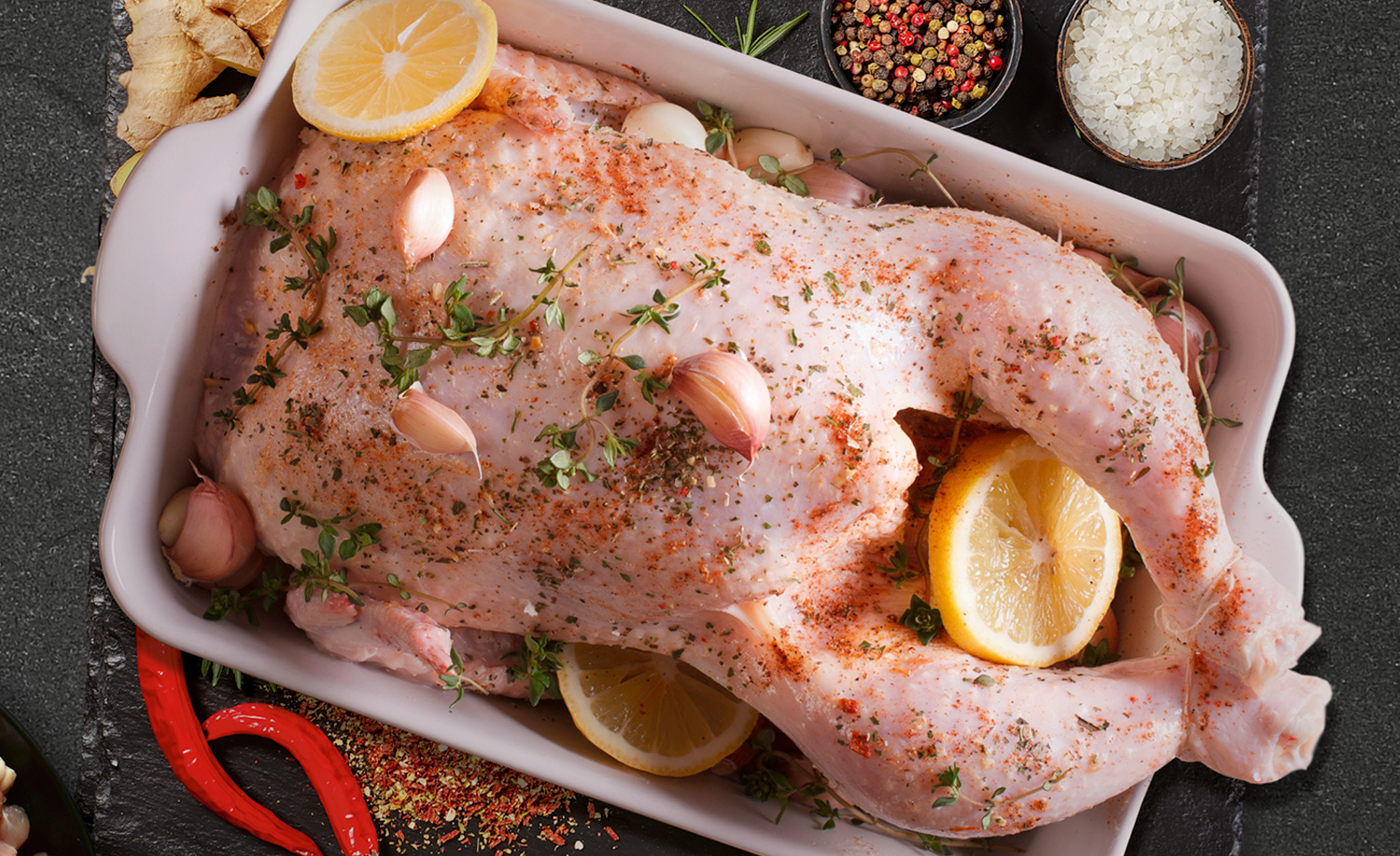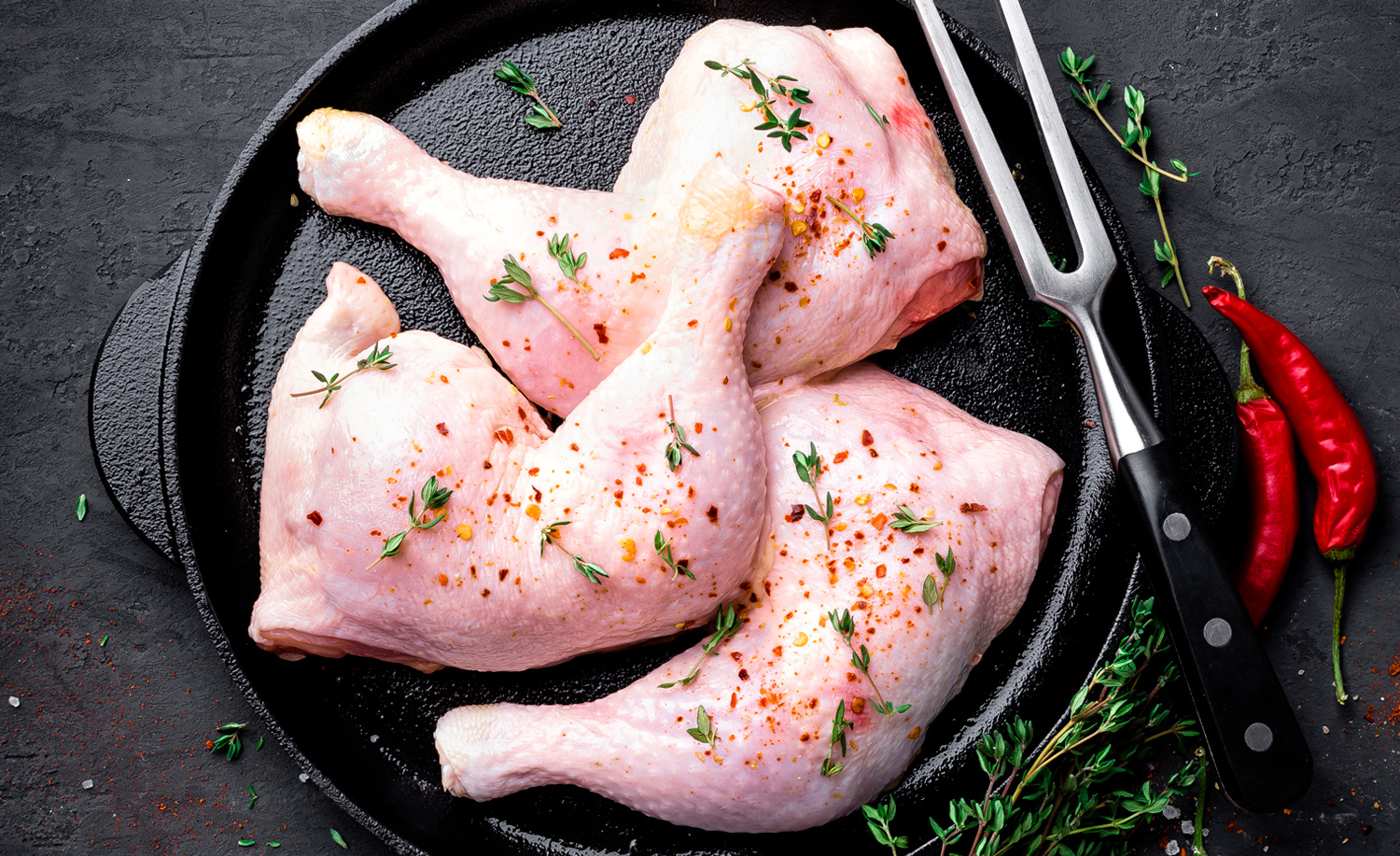Diabetes
Diabetics have high blood glucose levels and benefit from a diet that’s low in salt, saturated fat and sugar, and high in fibre and wholemeal carbs.
Buying cheap chicken is a false economy. If you fry chicken breast and it’s swimming in liquid, then you’re paying for water, not meat. Buy the best poultry you can afford (free range and corn fed is preferable) and you’ll see the benefit in texture and flavour. Shout about it on your menu too; customers are usually happy to pay extra for better welfare meat.
“50% of meat consumed in the UK is chicken, duck, goose or turkey”
Breast is the most popular cut, as it’s plump and juicy. It cooks quickly, but that means it also dries out. Never cook poultry straight from the fridge as that shocks the protein strands and makes the meat tough; leave it at room temperature for 20 minutes.
Chicken and poultry breast is best cooked on a hot, fast sear with the skin on and finished in the oven. Oil the meat rather than the pan to stop it being greasy. Breast works well in quick-cook dishes like stir fry. If you’re cooking curry or stew, add it towards the end so it doesn’t become stringy.
Turkey breast is very lean and dries out easily. It benefits from a quick cook or roasting on the crown with the skin on to retain the juices.
Duck breast is closer to red meat and can be served slightly pink. It’s expensive and requires careful cooking. Score the skin and put it in a cold frying pan, skin side down. After 15 minutes the fat renders out and it’s finished in the oven. Keep duck fat for confit or delicious roast potatoes.

We used to chuck wings in the stock pot, but now they’re very on trend. Wings have a lot of flavour, but not much meat, so they’re best crumbed or in a sticky sauce. Try spicy Korean chicken wings, American honey baked turkey wings, or 5-spice duck.
Butcher the whole bird if you can; you’ll get better value and use the whole bird. Chicken neck, wings and bones are essential for good stock. Don’t miss out on the oysters when roasting a whole bird; located just above the hip socket, they’re two small, roundish pieces of succulent dark meat that make a juicy chef’s treat or a special garnish.
Quail sounds fancy, but just think of it like a tiny chicken. Roasted whole quail can be simply stuffed and brushed with butter or a sticky marinade. Spatchcock* or quarter quail, and deep fry it like chicken or stew it in a rich tomato broth.
*Spatchcock: remove the backbone, open
out and flatten.

The leg consists of a thigh and drumstick. Create one dish from the thigh and another from the drumstick or cook it in one piece for more flexibility. Legs cook best low-and-slow on the bone; it has more flavour than the breast, it’s juicy, and cheaper too.
Chicken leg should be your go-to cut for curries, soups and stews. Chicken legs suit BBQ, spicy or Asian flavours, and chicken drumsticks work well when crumbed or fried.
Turkey legs can be sinewy, so they’re best boned out, stuffed, rolled and roasted. Otherwise, turkey mince is lean, cheap and makes great koftas, burgers and meatballs. Turkey mince also takes on veg well, so add finely chopped carrots, onions or courgettes to your mix. Turkey thighs make good casseroles and curries and since it’s affordable you can get creative.
Duck legs don’t tend to overcook like duck breast. Shred duck leg for salads, stir fry, croquettes or even sausage rolls; it’s a savvy way to charge a premium for a cheaper cut.

Crispy chicken skin can be finished off in a hot frying pan and used as a garnish. Giblets are edible offal, including liver, heart, gizzard, and neck. Keep the chicken liver for pâté or sauté and serve with pasta, while turkey liver is larger and can be pan fried. The other giblet parts make excellent stock: use to make gravy.
Sign in to save topics you love, and build your archive of events, menus and articles.